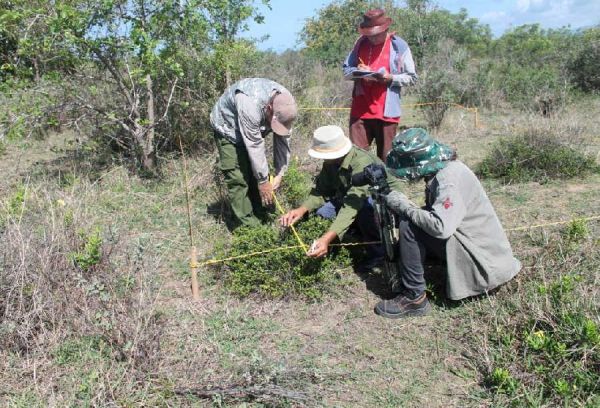
In the southern territory of Casilda, municipality of Trinidad, in the central Cuban province of Sancti Spiritus, there is an exclusive vegetation with unique species which is seriously threatened due to human actions
“Very few locals know that in this territory there are natural treasures of national and world relevance. A very particular florula has evolved here due to the presence of quartzite sandy soils, which impose extreme environmental circumstances on the plants. Unfortunately, this kind of natural ecosystem is one of the most harassed throughout the country due to human actions”, told Escambray Julio Pável García Lahera, a researcher from the Botanical Garden of Sancti Spiritus.
Among the most outstanding floristic species, the expert mentioned the more than 300 plants inventoried in that southern coastal strip of which 63 stand out for their endemism and for the extinction risk they are faced with.
“As if that weren’t enough, in that sandy area of just 60 square kilometers, there are four unique species of shrubs which are endemic to this place. Their scientific names are: Condea rivularis, Mosiera crenulata, Psidium claraense (known as Casilda’s Guayabita) and Varronia intricata (the so-called Papita Enana)”, added the expert.
At present moment, an integral action project is being carried out in Casilda aimed at the conservation of local biodiversity. It is financed by the National Program for Sustainable Use of the Components of Biological diversity in Cuba, under Citma’s Environment Agency.
The project plans to update the flora inventory and the vegetation map of the quartzitic sand areas of Trinidad’s coastal plains, to document the phenology of local endemic species, to carry out ecological studies on the structure of plant communities and their patterns in the face of human impacts such as mining, grazing and plantations, and to perform phytochemical studies of significant species in the area in order to discover their medicinal potential to achieve a more effective visualization of the need for their protection, among other objectives.
 Escambray ENGLISH EDITION
Escambray ENGLISH EDITION





Escambray reserves the right to publish comments.